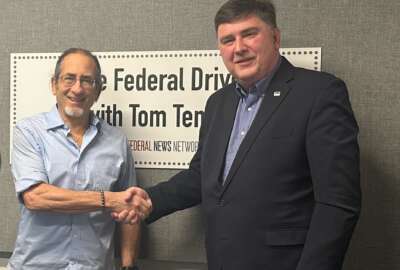USDA fights hunger and food insecurity
Agriculture Secretary Tom Vilsack has announced 27 awards today to local organizations to build community food systems and fight hunger and food insecurity. USDA\'s...
wfedstaff | June 3, 2015 4:52 pm
By Suzanne Kubota
Senior Internet Editor
FederalNewsRadio.com
“Give a man a fish, feed him for a day. Teach a man to fish, feed him for a lifetime” – Lao Tzu
At the very core, that explains the concept behind some of the programs at the USDA’s Institute of Food Safety and Nutrition.
As part of the Food Security Act 1996, funds were given to communities when food banks didn’t seem to be working out as planned, Liz Tuckermanty, National Program Leader, explained to Federal News Radio.
The funds were to be used proactively, initially for gardens and then perhaps food stands. “The idea was to create an opportunity for grassroots organizations to solve their own food problems and become more food sufficient.”
Tuckermanty explained the difference between food safety and security: think of safety as in a tainting of food, maybe by bacteria, and security as fighting hunger. So the efforts toward food security, explained Tuckermanty, is like a “campaign against food deserts.” Stores are often located where they have parking, but “what happens then is smaller low income communities often don’t have that kind of market, so their food security is not stable. So what we’re trying to do is help those little low income communities that kind of get deserted by regular marketing of food and help them figure out how to get healthy food into their communities.”
Lessons Learned
Tuckermanty clearly enjoys her work. The most fun, she said, is that it’s grassroots run. The communities decide priorities for the projects themselves. That, she said, was the first lesson learned: don’t create projects for other people. “Allow people that want to improve their food security to develop their own projects.” Don’t put a garden in where nobody wants to garden, for example.
People understand their own communities, said Tuckermanty, so let them come up with the projects.
“We’ve learned a lot about the nature food deserts in the country through these projects, and we’ve learned a lot about really creative solutions.”
A solid start to building a community garden, for example, could be finding people willing to share expertise in gardening. Teaching, learning, and sharing the load “breaks down isolation that you find sometimes in impoverished communities and brings people out to work together,” said Tuckermanty, “and interestingly enough, it reduces crime and it also stimulates other kinds of growth and coming together, which is really neat.”
And Then the Growing Grew
Now, said Tuckermanty, “many of our projects found that they could sell to high-end restaurants because chefs were very particular about the taste of their food and the freshness of their food, so what I would say the trend is is that all of society is beginning to value local healthy food and so it’s being a springboard to help these little community food projects find markets in addition to feeding their own community. They’re finding markets, higher-end markets, that can bring funds in to keep their projects going and to help them grow.”
In addition to restaurants and markets, some community food projects will be able to sell what they grow to local schools and hospitals.
Copyright © 2025 Federal News Network. All rights reserved. This website is not intended for users located within the European Economic Area.





